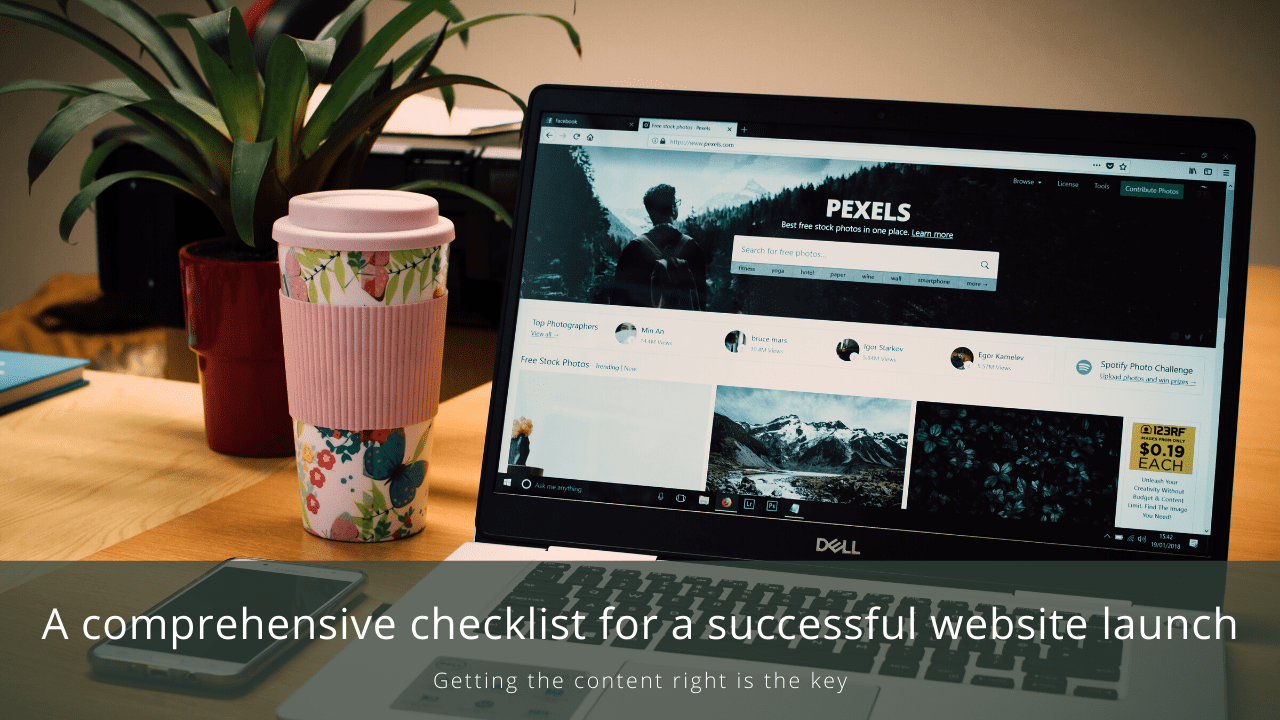As a business owner, it doesn’t get much more exciting than launching your brand new website. Well, maybe that’s just us. After months of planning and development, you can finally see the new online face of your business. Even better, you get to share it with your potential customers.
However, web designers’ job scope can vary. Therefore, it’s always worth keeping your own checklist on hand before you launch. Missing these won’t break your website; however, they will delay a smooth transition. What’s more, strong attention to detail will certainly benefit your reputation. Fortunately, you don’t have to go hunting for a checklist, as we’ve got one for you right here.
Cross-browser testing
Not all browsers are created equal. While a site may work perfectly on Firefox, visitors might experience issues on Chrome. Web developers do factor this in, but it never hurts to be sure. The solution is to test every page of your site on as many browsers as you can. If you find any problems, your developer can address them before launch.
Check responsivity
In 2018, 52% of global web traffic came through mobile phones. For this reason, your site must be responsive to screens of every size. Your developer will almost definitely have built your site with this in mind. However, it’s best to check. Fortunately, there are free tools available that allow you to adjust your site’s viewport dimensions for testing. Some browsers, like Firefox Developer Edition, will have this feature built-in.
Proofread all of your content
Always thoroughly reread all of your web copy in case of mistakes. A minor spelling mistake can make a business look unknowledgeable or unprofessional. Once you’ve double-checked everything, ask a colleague or friend to take a look. A second pair of eyes reading something for the first time will notice more.
Learn how to write like a content marketing pro.
Optimise your page speed
Your website’s loading times are more important than you think. Google’s DoubleClick found over half of mobile users would abandon a page that took more than 3 seconds to appear. The BBC discovered they lost 10% of viewers for every extra second a page took to load. There are several ways to boost your site’s speed. Methods range from using a CDN to optimising your image file sizes. A slow site also affects your Google Search rankings.
Test all of your forms
If you have any forms on your site, you need to make sure they all work on every page. If it’s a contact form, send yourself a message and check your email inbox. If your business doesn’t use a single email client, make sure to test each client. Some forms may display results in the backend of your site, so you may need to look there instead.
Check your SSL certificate
An SSL certificate allows a secure connection between your site’s server and a visitor’s browser. If you don’t have one, visitors will know by the missing padlock icon next to your web address. Furthermore, some browsers will warn or block sites without an SSL certification. Uncertified sites will also suffer when it comes to SEO.
Enable Analytics
To track who’s visiting your site, you need to add Google’s code to each page of your site. If you’re using WordPress, you may find it easier to use a plugin for this.’
We discuss what is a good domain authority.
Update your SEO
To help search engines identify what content is on your site, each page needs a meta description and title tag. These must be unique for each page. Your images should also contain alt tags to boost your searchability. SEO can be highly complex, but you can make a big difference with minor tweaks.
Enable search engine indexing
It’s best practice to turn indexing off when you’re building your site. This stops search engines from directing people towards an unfinished web page. Once you’re ready to launch, remember to re-enable indexing or you’ll be unsearchable.
We discuss five simple ways to get people to read your content.
Create and submit your XML sitemap
Search engines won’t be aware of your website on their own. Make sure you’ve generated an XML sitemap for your site and uploaded it to your Google Search Console. You may want to submit the sitemap to other browsers too. A sitemap also helps the search engine to understand the layout of your site, and identify your priority pages.
Have you uploaded your favicon?
A favicon is a small icon that appears in a browser tab when you’re visiting a site. It’s usually a smaller version of your logo and is also used as a shortcut or bookmark icon. Sites without a favicon can appear untrustworthy to visitors, so check it before you launch.
Ready to launch?
Launching a website is not a one-off task. You’ll always need to tweak things as you go to maximise their performance. However, by following a pre-launch checklist, you’re guaranteed to save potential frustration in the future.
You can reach us at hello@syncpr.co and book a consultation with one of our highly qualified consultants to find out how you can up your content game and move forward with a successful website launch.
This article has been updated on 10 June 2020

